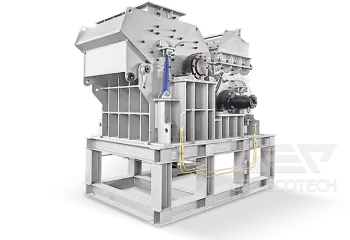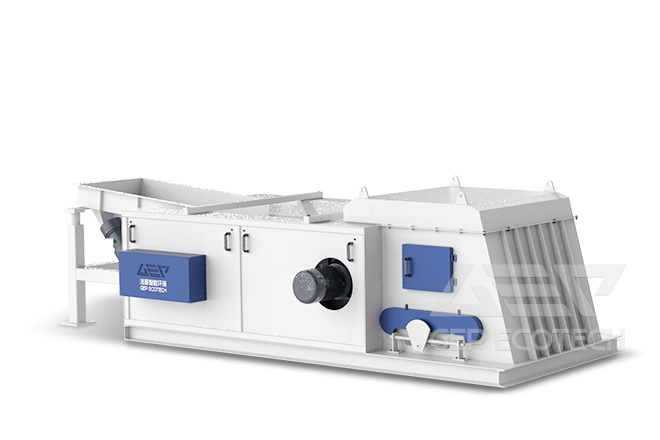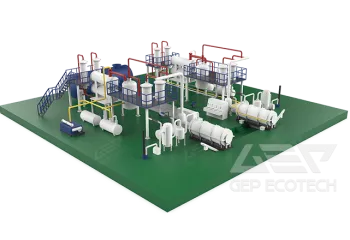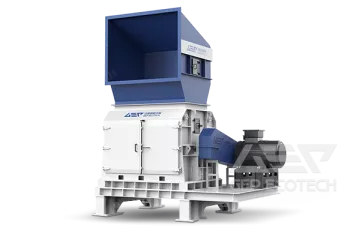Classification
The three main types of material derived from most CDW are crushed concrete, crushed masonry, and mixed demolition debris. After crushing and undergoing beneficiation in certified recycling plants, the resulting aggregates may be assigned to one of the four following categories.
Recycled Concrete Aggregates (RCA)
Concrete is found in most RA because it is the most used construction material in structural applications. Organizations in various countries have developed specifications which include a definition for RCA. Many of them seem to agree that to be considered RCA they must comprise a minimum of 90%, by mass, of Portland cement-based fragments and NA. This category also includes mortar and concrete masonry units. It is intended that this will lead to grades of RA in which: (i) Rc P 90%, (ii) Rc P 70%, and (iii) Rc < 70%, where the quality of the RA is determined by the recycled brick (Rb) content.
Recycled Masonry Aggregate (RMA)
Masonry rubble is a collective designation for various mineral building materials resulting from the construction and demolition of buildings and civil engineering structures. This family of materials may include aerated and lightweight concrete blocks, ceramic bricks, blast-furnace slag bricks and blocks, and sand-lime bricks. Masonry rubble often contains mortar rendering and burnt clay materials such as roofing tiles and shingles. It is composed of a minimum of 90%, by mass, of all the materials mentioned above. RA with high recycled brick content are commonly produced by best-practice recycling centres in which a concerted effort has been made to separate concrete and asphalt to other stockpiles.
Mixed Recycled Aggregates (MRA)
This material is composed of crushed and graded concrete and masonry rubble. The resulting aggregate is a mixture of two main components obtained from the beneficiation of CDW. Some specifications establish its composition as less than 90%, by mass, of Portland cement-based fragments and NA. In other words, it may contain several other common CDW materials such as masonry-based materials (ceramic, light-weight concrete).
Construction and Demolition Recycled Aggregates (CDRA)
Throughout this investigation, it was found that, on the whole, the literature contains limited information on the origin and composition of aggregates and so, where it was not possible to fully categorize the RA they were deemed CDRA. In other cases, RA contained high levels of contamination (e.g. asphalt, glass, plastics, wood) and were also classified into this category since they did not belong to any of the others (RCA, RMA, MRA). These materials may be the result of waste coming from construction and demolition sites that have not been through any type of sorting and therefore may contain valuable materials as well as contaminants.
Contaminants
The variety of contaminants that can be found in RA from the demolition of existing structures can severely degrade the strength of concrete made with them. Such materials include asphalt, gypsum, metals, plastic, rubber, soil or wood.
Asphalt
Bituminous materials have a general effect of reducing strength,depending on their construction application. Hansen reportedthat the addition of 30% by volume of asphalt reduced the compressive strength by about 30%. Other authors noticed a 75%compressive strength loss with a replacement level of 64%, byweight of total aggregate content.
Glass
This material is usually removed from buildings prior to demolition and, given the recycling efforts in most of the UK and Europe,it tends not to be present in CDW and RA. This pre-sorting is vitalbecause of its similar density to stone’s and brick’s, which makes itdifficult to separate glass from the rest of the heavyweight materials through wet separation or air sifting procedures. Also, becauseglass is brittle it usually ends up in the fines content following thecrushing procedures in recycling plants, which makes recycledsands more liable to having high percentages of this contaminantthan the coarser fractions.
Other constituents
Organic materials, for example wood and plastic, are often difficult to separate from CDW prior to crushing. Good practice is toseparate these materials using air blowers, water processing (theytend to float to the surface) or sometimes by hand from a conveyorbelt moving between the primary and secondary crushing procedures. Any non-floating wood, paper and plastic remaining withinRA are classified as ‘‘other constituents’’. Wood and plastic, whichfloat in water, are classified separately as floating non-stone material and content may be limited to a maximum of 0.1% by mass.
Although smaller than 4 mm, soil and clay particles frequentlystick to stone and brick. If not removed, their presence mayadversely affect the properties of concrete. However, washing RAprior to use should remove most soil and clay. Like non-floatingwood and plastic, clay and soil are classified as “otherconstituents”.
After jaw crushing, ferrous metals are usually removed fromCDW by means of magnetic belts, whilst eddy currents may beused to remove non-ferrous metals. In addition, hand pickingmay be used at recycling plants to remove metals from a movingconveyor belt prior to the use of a secondary crusher. Both ferrousand non-ferrous metals are also classified as “other constituents”.It has been suggested that strict limits should be placed onthe gypsum content to prevent sulphate expansion. In the Netherlands, CDW containing gypsum are regarded as contaminated.These contaminated CDW, along with sewer sand and contaminated soil, must be extensively washed before they can be usedto produce RA.
Size and shape
The type of crushing devices used to break down larger piecesand the number of processing stages influence the size and shapeof the resulting aggregates. The recycling process normally usesprimary and secondary crushing stages. Jaw crushers, which aretypically used in the primary crushing stage, provide the bestgrain-size distribution of RA for concrete production. A secondcrushing usually leads to rounder and less sharp particles. Therefore, if RA only undergo a primary crushing process they will tendto be somewhat flat and sharp, as observed by some researchers. Cone crushers are suitable as secondary crushers as theynormally have a 200 mm maximum feed size and give a morespherical shape to RA. Impact crushers, also used for secondarycrushing stages, produce aggregates with a good grain-size distribution and lower flakiness index.
It has been concluded that coarse aggregates meet the sizespecification range by simply adjusting the setting of the crusheraperture, and that it is reasonably easy to produce good qualitycoarse aggregates. However, it was found that during the production of fine RA, these tend to become coarser and more angularthan any of the standard sands used in the production of concrete. Also, this coarseness and increased angularity are the reasonswhy the workability of concrete made with these materials maysometimes be a problem.





